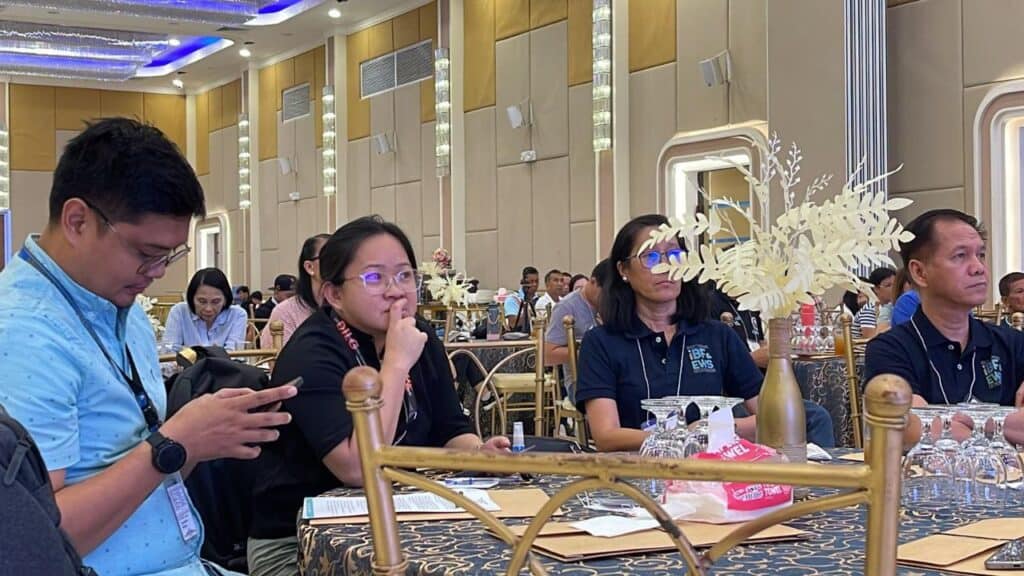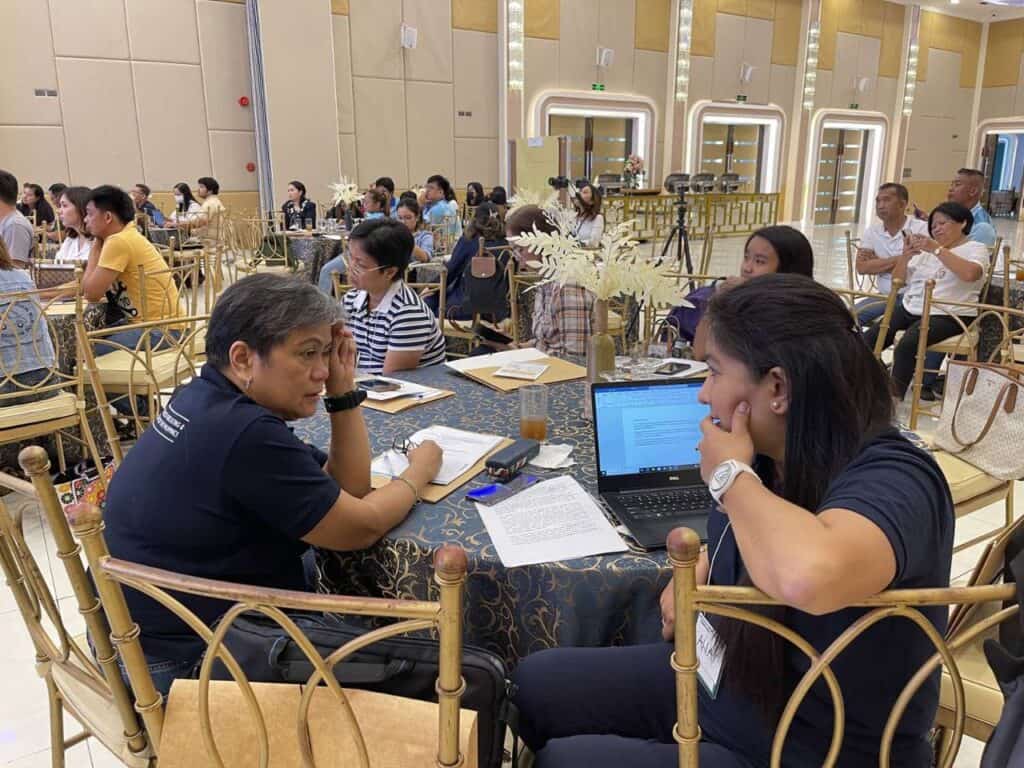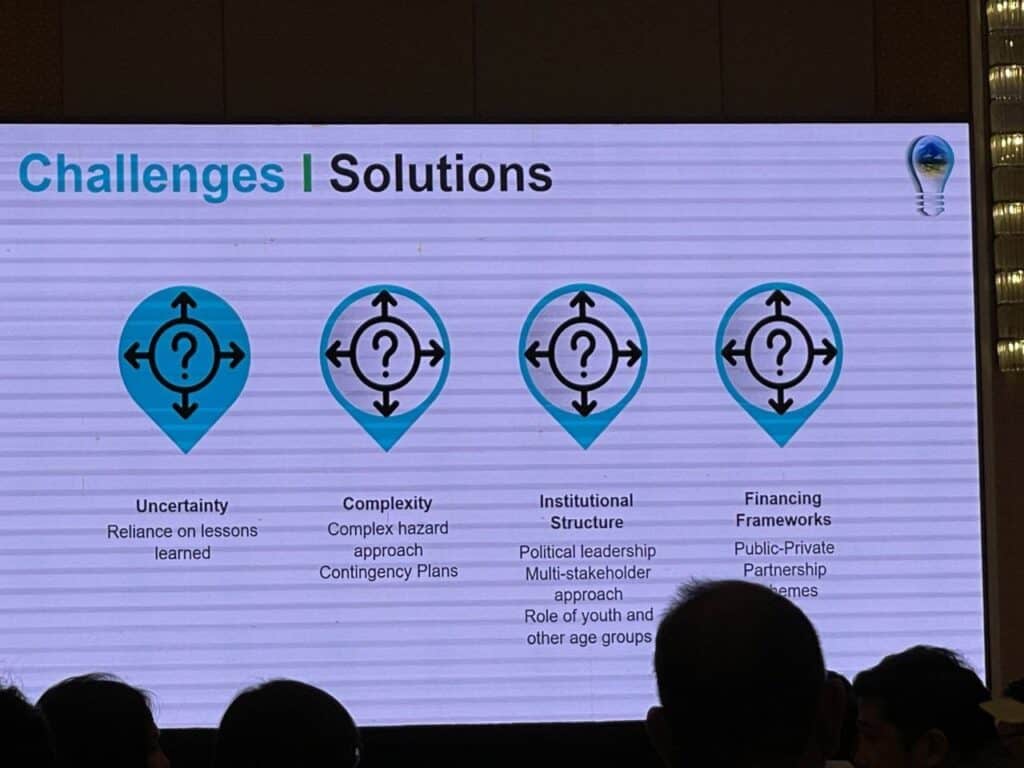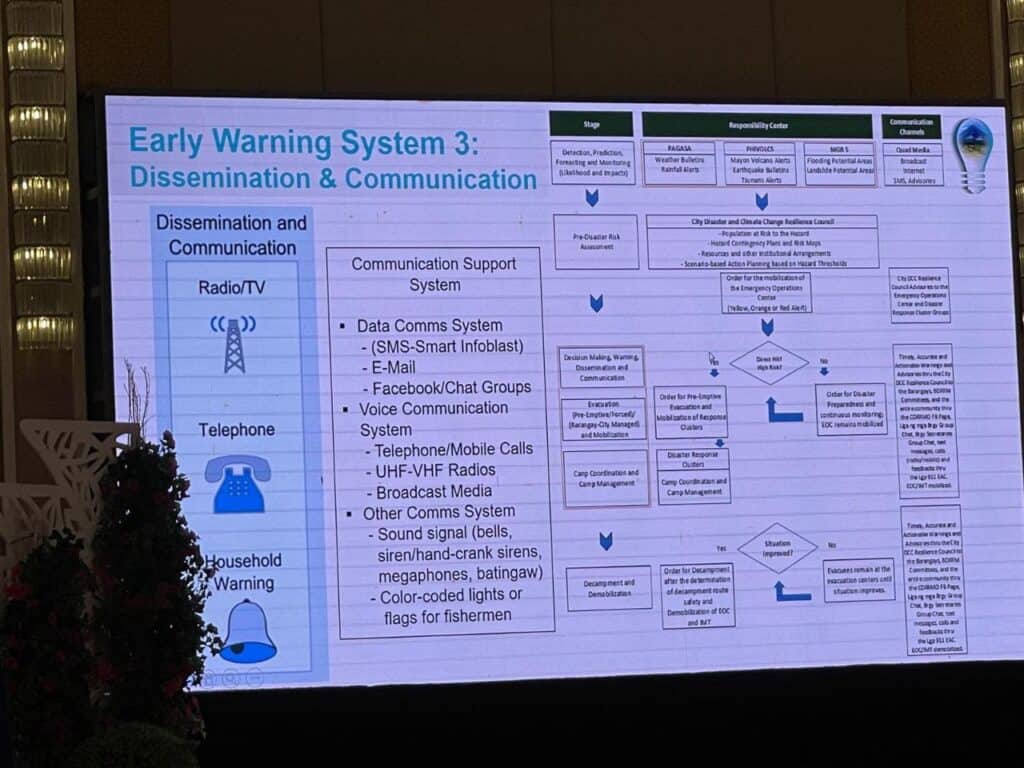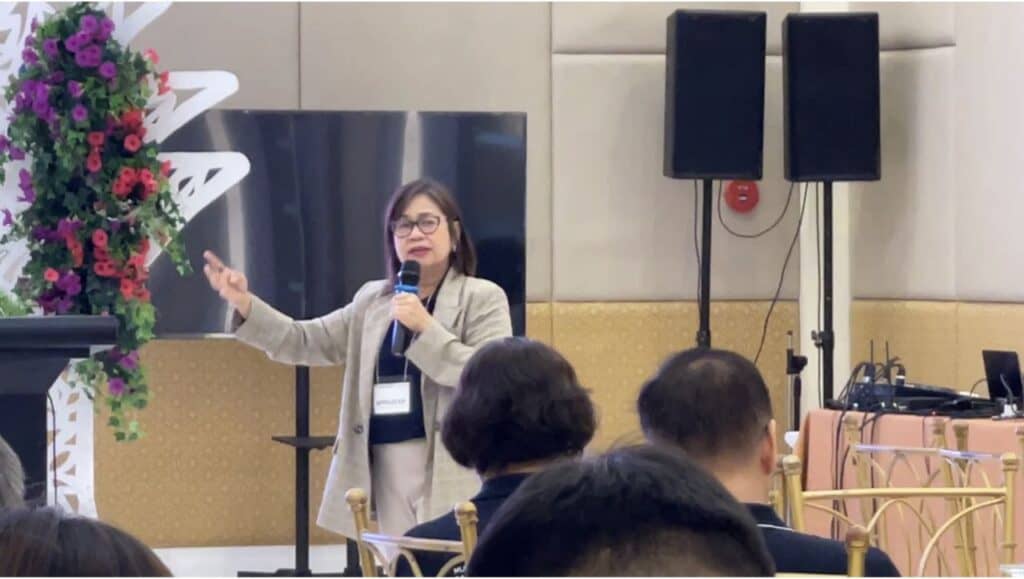The City Government of Legazpi kicks-off the Green Climate Fund Multi-Hazard Impact-Based Forecasting and Early Warning System (MH-IBF-EWS) for the Philippines with a Stakeholder Engagement Workshop held last September 13, at the Pepperland Convention Center, Legazpi City.
Legazpi City has been selected as one of the pilot cities for the project, which aims to increase capacities to develop long-term climate risk reduction and adaptation measures against four hazards: flood, landslide, severe winds, and storm surge.
Dr. Marqueza Reyes, National Project Manager of the Project funded by the Green Climate Fund, emphasized that the project is looking at hydro meteorological hazards such as flooding and severe winds.
She acknowledged that Legazpi City has different types of disaster risks, including lahars, but the project is focusing on hydro meteorological hazards only.
Days 2 and 3 of the workshop will focus on capacity building of the participants, the barangay representatives of the highly vulnerable barangays, as well as representatives from civil society and non-government organizations (NGOs), as well as provincial level representatives.
The project aims to build more resilient and climate-adaptive communities that will be able to protect themselves and take anticipatory actions before the hazard.
The City Disaster Risk Reduction and Management (DRRM) Officer and Legazpi Project Team Lead Miladee Azur, identified the barangays of Maoyod, Tula-Tula, Ilawod West, and Ilawod East as the most at risk of flooding.
For severe winds, the project will focus on the coastal areas with high-density populations and housing units made up of light materials.
Kagawad Danny Belludo of Barangay 11 Maoyod, Legazpi City, who is also in charge of DRR in the barangay, confirmed that the practices mentioned by the speakers have been implemented by the city’s DRRMC for quite some time now, with some minor differences, and emphasized that the whole city has already advanced in terms of implementing these practices across all 70 barangays.
Dr. Cedric Daep of Albay Provincial Safety and Emergency Management Office (APSEMO) expressed his agreement that Impact-Based Forecasting will benefit not only Legazpi City but also other areas, as it is more economical and provides direct warning information on impacted areas.
He also mentioned that they are already formalizing the procedures in Albay, and emphasized the importance of documenting and having guidelines in writing to institutionalize the procedure.
The project will last for five years, with the intention of having a Forecasting and warning system for those hazards that are already impact-based instead of hazard-based by 2027.
Legazpi City Mayor Carmen Geraldine Rosal, in her welcome address thanked the National Project Management Team for choosing Legazpi City as one among the four project sites.
The National Project Management Team, is led by the executing entity agencies of Department of Science and Technology-Philippine Atmospheric, Geophysical and Astronomical Services Administration (DOST-PAGASA), Department of the Interior and Local Government (DILG), Office of the Civil Defense (OCD), Department of Environment and Natural Resources (DENR)-Mines and Geosciences (MGB), World Food Programme, Land Bank of the Philippines, and their regional counterparts. | Jeric Lopez
